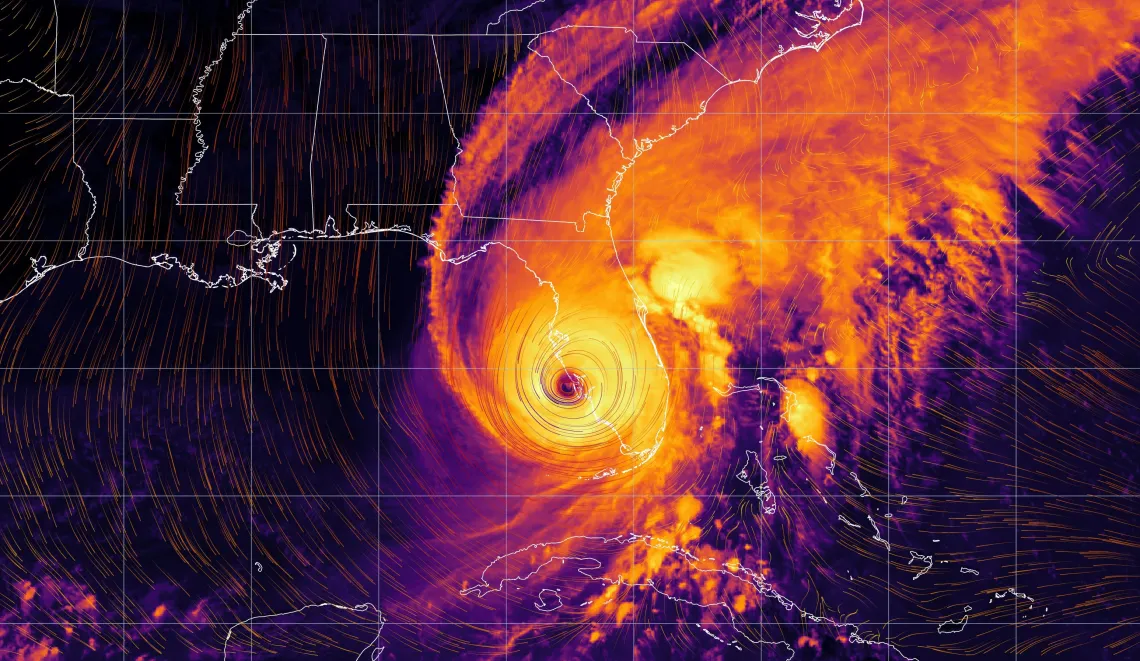2024 Hurricane Forecast by Xubin Zeng and Kyle Davis

Wiki Link: https://en.wikipedia.org/wiki/2024_Atlantic_hurricane_season
Update 5/2/2024: Additional related content in a UArizona News article by Niranjana Rajalakshmi - Brace for a very active hurricane season this year, warn UArizona forecasters
Kyle Davis and Xubin Zeng have announced their forecast for the 2024 hurricane season which runs from June 1 to November 30. The prediction includes total numbers of named storms, hurricanes, major hurricanes, and accumulated cyclone energy (ACE, defined as the sum of the squares of the 6-hourly windspeeds in knots of storms at least of tropical storm strength). Their forecast combines dynamic forecasts with machine learning as informed by their physical understanding of hurricane activities:
- They utilize a Random Forest approach based on seasonal forecast data from the European Centre for Medium-Range Weather Forecasts (ECMWF).
- They use the forecast July/August/September tropical Atlantic area-averaged sea surface temperatures (SSTs) in the same region used in their June predictions (Davis, Zeng, and Ritchie 2015; Davis and Zeng 2019) as well as August/September area-averaged SSTs in the Nino 3.4 region.
- Their method uses 25 ensemble members from 1981-2016 and 51 members from 2017-2024.
- They calibrate the model using data from 1981 to 2007: they first train the model on the first ensemble member (from the model control run) on all data from 1981 to 2007, use that model to predict for the other members over the same time period, and average predictions from all members as their prediction for that year. Then they validate the model using data from 2008 to 2023 in “real time” (for example, for 2015, they would train the model using data from 1981 to 2014 and use the 2015 SST data to make a prediction for 2015).
Table 2 (below) compares their model’s performance during the calibration and validation periods against the 5-year running average, or a no-skill metric. The model outperforms the no-skill category in all variables.
Last year: Sea surface temperatures were boiling in 2023, but a strong El Niño counteracted what could have been a very intense season last year.
This year: They are seeing forecasted sea surface temperatures during peak season even higher than last year, according to ECMWF. ENSO will be trending towards neutral, possibly La Niña, which will be the major difference from last year.
For the April forecast, they expect an active season over the North Atlantic. Tropical Atlantic SSTs are forecast to be the highest in their dataset. For the Niño 3.4 region, forecast SSTs are somewhat cooler than average, which at least should not inhibit activities. Storms should form easily and often this year.
2024 Prediction | Probability Range | Median Since 1980 | |
| Hurricanes | 11 | 9-13 (65%) | 7 |
| Major Hurricanes | 5 | 4-6 (65%) | 2 |
| Named Storms | 21 | 18-24 (67%) | 14 |
| ACE | 156 | 116-196 (65%) | 107 |
Table 1. 2024 tropical outlook.
REFERENCE
Davis, K., X. Zeng, and E. A. Ritchie, 2015: A New Statistical Model for Predicting Seasonal North Atlantic Hurricane Activity. Wea. Forecasting, 30, 730–741, doi: 10.1175/WAF-D-14-00156.1
Davis, K. and X. Zeng, 2019: Seasonal Prediction of North Atlantic Accumulated Cyclone Energy and Major Hurricane Activity. Wea. Forecasting, 34, 221–232, doi: 10.1175/WAF-D-18-0125.1
RESEARCHER CONTACT
Mr. Kyle Davis (email: davis7000@gmail.com); Prof. Xubin Zeng (email: xubin@arizona.edu; Tel: 520-621-4782)
| Category | Calibration | Validation | 5-yr Average |
| Named Storms | 2.6 | 3.4 | 4.4 |
| Hurricane | 1.9 | 2.3 | 2.8 |
| Major Hurricane | 1.2 | 1.1 | 1.5 |
| ACE | 43.8 | 35.4 | 45.1 |
Table 2. Mean absolute errors of our forecasts and those using the 5-year average as the prediction. All three columns use data from 1981. 5-yr average is for the same period as the validation test.
Stay tuned: Zeng and Davis will update their prediction in early June 2024.
Full document:

